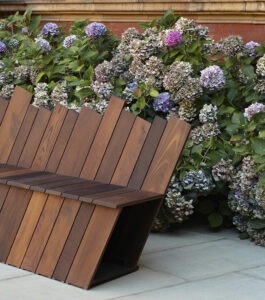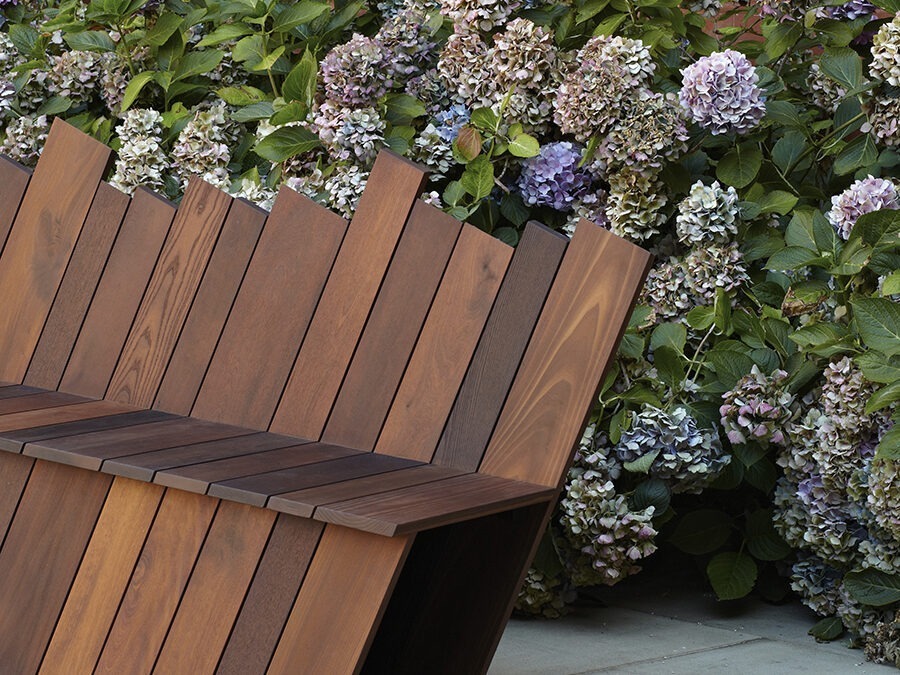If you are not specifying Thermally Modified Hardwood, perhaps you should be. The material is an environmentally friendly alternative to chemically treated wood and boasts an aesthetic appeal that will enhance both indoor and outdoor applications. Consider that Thermally Modified Hardwood is:
Non-toxic and Chemical Free – No chemicals are used in the process to thermally modify hardwoods. The material is developed with just heat and steam, in contrast to chemically preserved wood materials or synthetic products. And being chemical free, end-of-life disposal poses no threat to the environment and is not subject to special regulation.
Dimensionally Stable – Thermal modification uses heat to create chemical changes in wood cells. Cross-linking at the water absorption sites limits the ability of wood to absorb moisture. Less moisture absorption means increased dimensional stability, ergo less cupping and warping. Historically, untreated American Hardwoods could not be used in outdoor applications – cladding, decking, flooring. But with the thermal treatment process, they perform well. (Thermally modified wood expands and contracts five to 10 times less than untreated wood.)
Decay Resistant – During the treatment process, the wood undergoes both physical and chemical changes. Thermal modification removes organic compounds, including sugars, that can be nourishment or “food” for insects and decay-producing fungi that can feed on the hemicelluloses and carbohydrates in untreated wood. By destroying these food sources, thermally modified lumber is very resistant to decay.
Appropriate for Interior Applications – Thermally modified hardwood flooring is especially suited for kitchens, bathrooms, and basements where water exposure and humidity changes often cause stability issues. The material also has been used in exacting applications such as window jambs, where both decay resistance and dimensional stability are required.
Additionally, the elimination of sugars and resins makes the material lighter in weight and easier to cut, aiding in the installation process for both interior and exterior applications. Thermal modification also causes permanent reactions throughout the hardwood, changing its color to a rich chocolate brown throughout the board’s thickness. This deep brown color lends a tropical appearance to the American Hardwood, mimicking the look of exotic species that do not grow in temperate climates.
Visit the American Hardwood Information Center, www.HardwoodInfo.com, to learn more.

The Infinity Bench was designed by Martino Gamper in collaboration with the American Hardwood Export Council.



